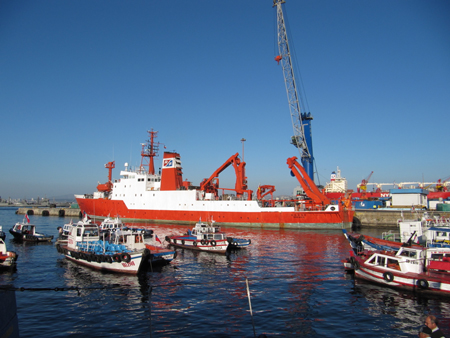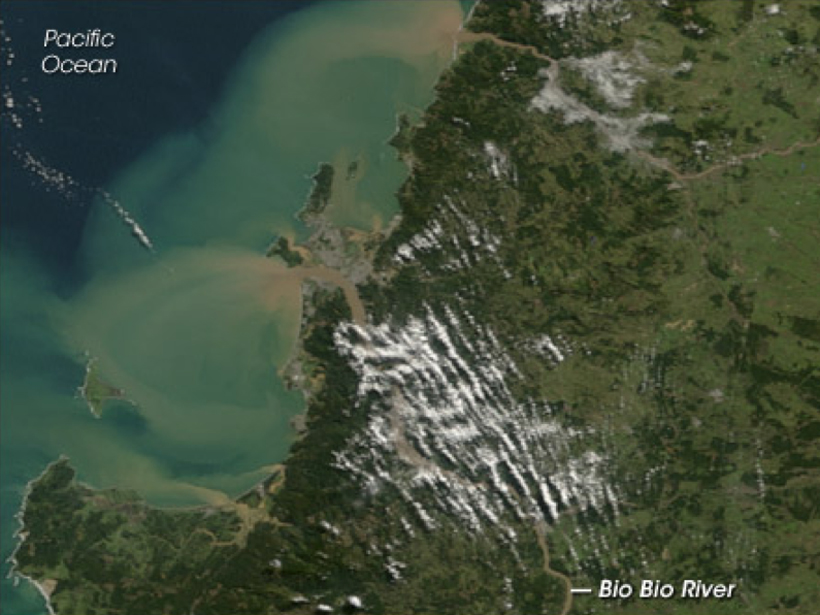Source: Geophysical Research Letters
Beryllium has a stable isotope (Be-9) and a rare cosmogenic variety (Be-10), their difference being merely one neutron. Because the radioactive Be-10 decays within the half-life of 1.4 million years, it does not exist on Earth unless produced by cosmic rays. Rainfall brings Be-10 down to Earth’s surface from the atmosphere, where it binds to soil particles or becomes dissolved in seawater and mixes with stable beryllium. Key to the method is that particles in soil and river sediment now provide a cosmogenic to stable beryllium ratio characteristic of regional erosion, whereas in seawater, the ratio provides a measure of the terrigenous input into an entire ocean basin.

To study how beryllium isotopes enter the ocean, Wittmann et al. used sediment samples from the ocean bottom about 30–80 kilometers off the coast of central Chile, collected by the R/V Sonne, as well as river sediments from nearby Biobío, Lebu, and Yani river basins. They used chemical extractions to access the isotope ratio on mineral coatings precipitated from soil solutions and seawater.
By comparing the amount of both isotopes in samples from land versus ocean, the researchers found that marine coatings had relatively higher amounts of cosmogenic beryllium than terrestrial coatings—up to 20 times higher. Stable beryllium, by contrast, increased by 20% in marine settings compared to its terrestrial counterpart.
The high cosmogenic values in marine coatings are a result of the fact that Be-10 is much more abundant in seawater than Be-9 is, and therefore, more of it is absorbed into the sediment coating. At the same time, sediments leach Be-9 and other trace metals back into the seawater during early diagenesis.
Further, the relative increase in the two beryllium isotopes from land to ocean revealed that ocean-derived coatings grow successively onto the river coatings, implying that the inner part of the grains preserves the local riverine “erosion” rate, whereas the outer part of the grains records the ocean-wide terrigenous input.
This study tells scientists more about the fate of terrestrial trace metals shed into the ocean. This is important for linking the erosion tracer that terrestrial beryllium provides in soil and river samples with global “paleoerosion rates” accessible from marine archives. (Geophysical Research Letters, https://doi.org/10.1002/2017GL074259, 2017)
—Sarah Witman, Freelance Writer
Citation:
Witman, S. (2017), Tracing land to ocean river transport with cosmogenic isotopes, Eos, 98, https://doi.org/10.1029/2017EO079927. Published on 23 August 2017.
Text © 2017. The authors. CC BY-NC-ND 3.0
Except where otherwise noted, images are subject to copyright. Any reuse without express permission from the copyright owner is prohibited.

